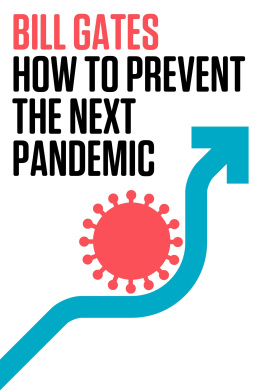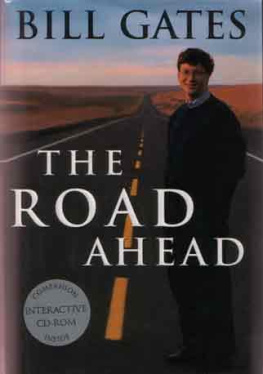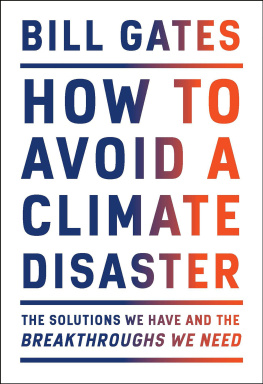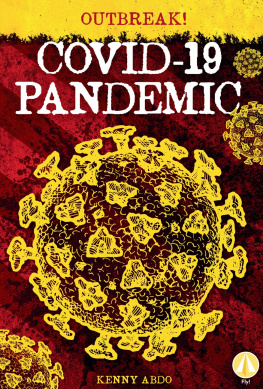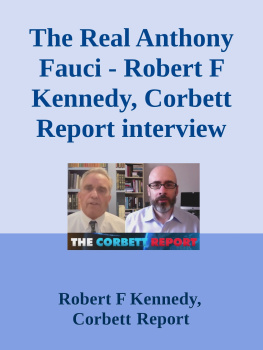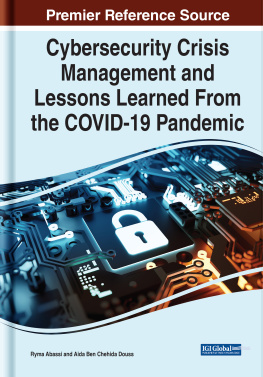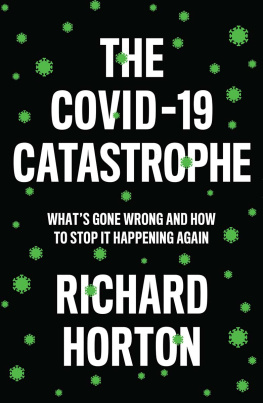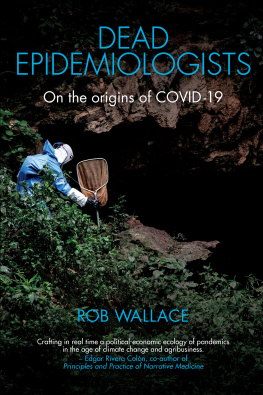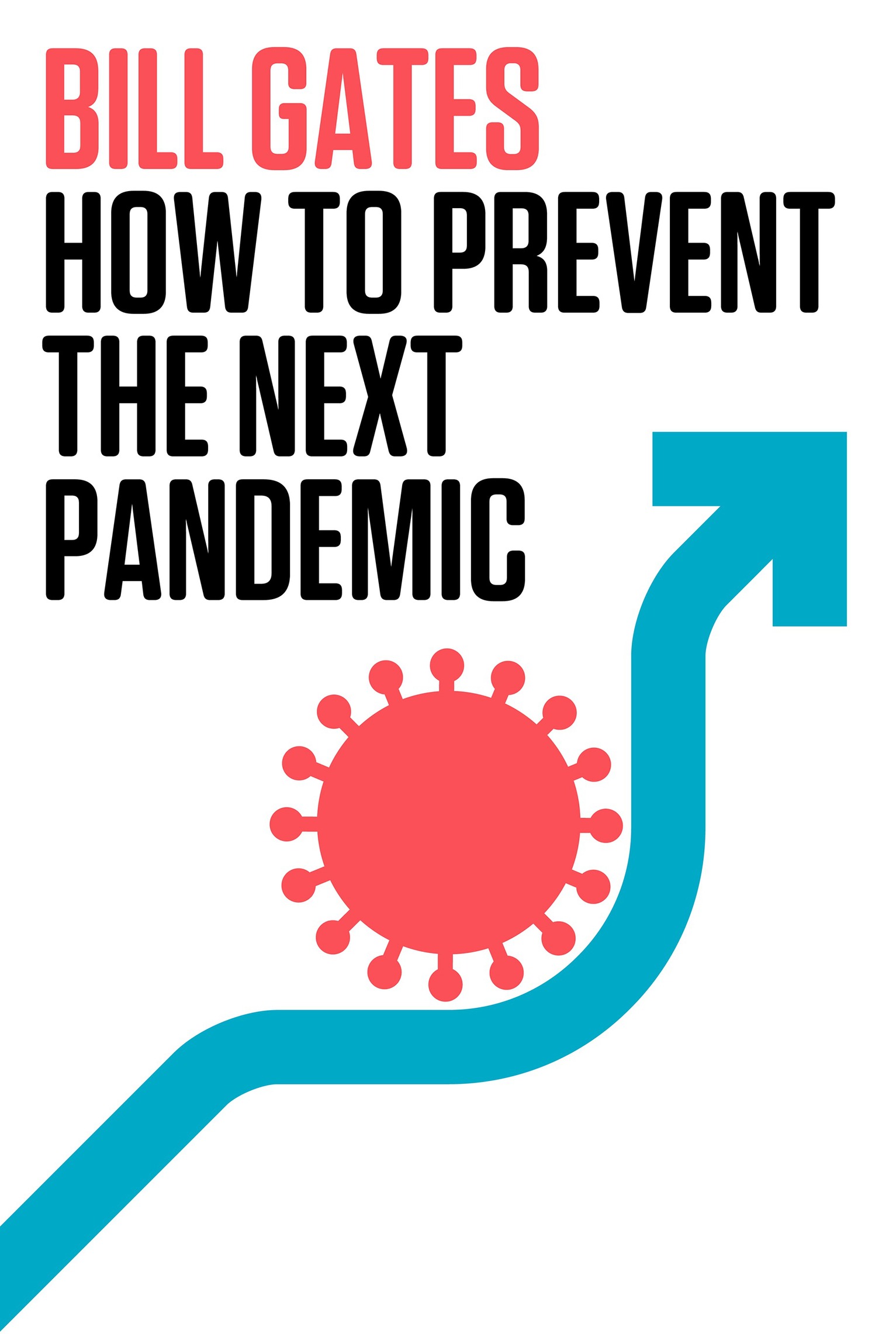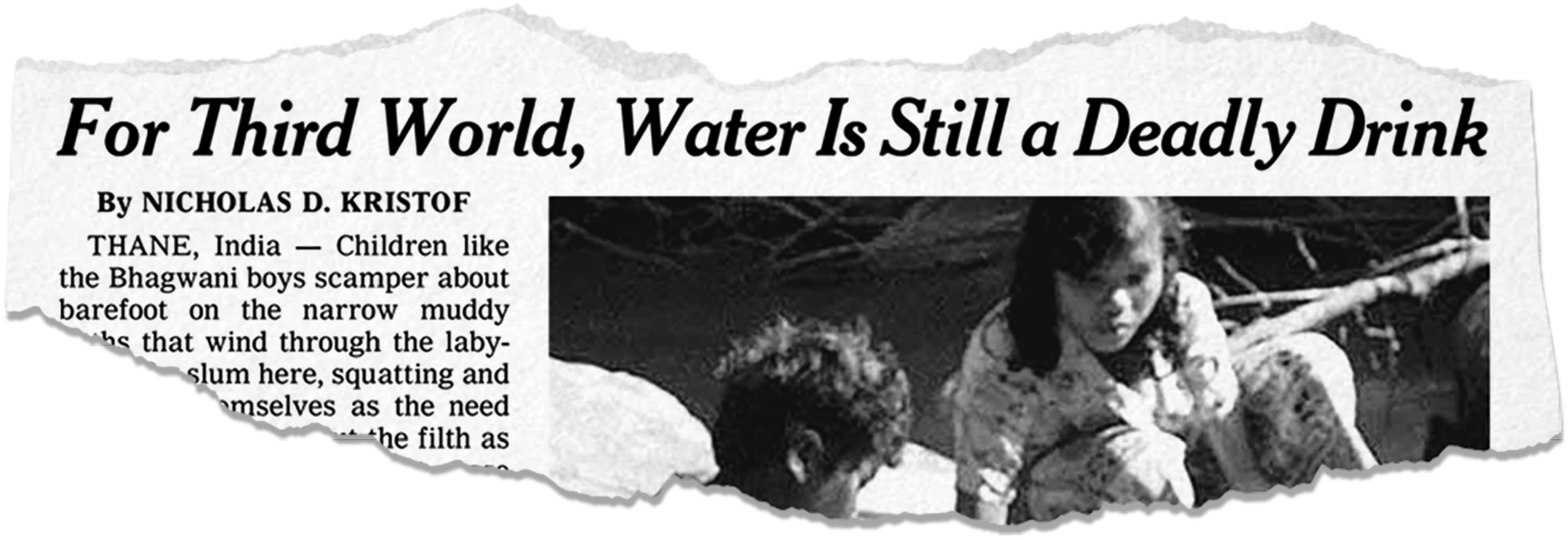Contents
Landmarks
Print Page List
ALSO BY BILL GATES
The Road Ahead (with Nathan Myhrvold and Peter Rinearson)
Business @ the Speed of Thought (with Collins Hemingway)
How to Avoid a Climate Disaster

THIS IS A BORZOI BOOK PUBLISHED BY
ALFRED A. KNOPF AND ALFRED A. KNOPF CANADA
Copyright 2022 by Bill Gates
All rights reserved. Published in the United States by Alfred A. Knopf, a division of Penguin Random House LLC, New York, and in Canada by Alfred A. Knopf Canada, a division of Penguin Random House Canada Limited, Toronto.
www.aaknopf.com
www.penguinrandomhouse.ca
Knopf, Borzoi Books, and the colophon are registered trademarks of Penguin Random House LLC. Knopf Canada and colophon are trademarks of Penguin Random House Canada Limited.
Library of Congress Cataloging-in-Publication Data
Names: Gates, Bill, 1955 author.
Title: How to prevent the next pandemic / Bill Gates.
Description: First edition. | New York : Alfred A. Knopf, 2022. | Includes bibliographical references and index.
Identifiers: LCCN 2021062526 | ISBN 9780593534489 (hardcover) | ISBN 9780593534496 (ebook)
Subjects: MESH: Pandemicsprevention & control | COVID-19prevention & control | Popular Work
Classification: LCC RA644.C67 | NLM WA 105 | DDC 614.5/92414dc23/eng/20220119
LC record available at https://lccn.loc.gov/2021062526
Library and Archives Canada Cataloguing in Publication
Title: How to prevent the next pandemic / Bill Gates.
Names: Gates, Bill, 1955 author.
Description: Includes bibliographical references and index.
Identifiers: Canadiana (print) 20220142092 | Canadiana (ebook) 2022014219X | ISBN 9781039005020 (hardcover) | ISBN 9781039005037 (EPUB)
Subjects: LCSH: PandemicsPreventionPopular works. | LCSH: COVID-19 Pandemic, 2020 Popular works.
Classification: LCC RA643 .G38 2022 | DDC 362.1028/9dc23
Ebook ISBN9780593534496
Cover design by Carl De Torres
ep_prh_6.0_139924582_c0_r0
To the frontline workers who risked their lives during COVID, and to the scientists and leaders who can make sure they never have to do it again
And in memory of Dr. Paul Farmer, who inspired the world with his commitment to saving lives. Author proceeds from this book will be donated to his organization, Partners in Health.
CONTENTS
INTRODUCTION
I was having dinner on a Friday night in mid-February 2020 when I realized that COVID-19 would become a global disaster.
For several weeks, I had been talking with experts at the Gates Foundation about a new respiratory disease that was circulating in China and had just begun to spread elsewhere. Were lucky to have a team of world-class people with decades of experience in tracking, treating, and preventing infectious diseases, and they were following COVID-19 closely. The virus had begun to emerge in Africa, and based on the foundations early assessment and requests from African governments, we had made some grants to help keep it from spreading further and to help countries prepare in case it took off. Our thinking was: We hope this virus wont go global, but we have to assume it will until we know otherwise.
At that point, there was still reason to hope that the virus could be contained and wouldnt become a pandemic. The Chinese government had taken unprecedented safety measures to lock down Wuhan, the city where the virus emergedschools and public places were closed, and citizens were issued permission cards that allowed them to leave their homes every other day for thirty minutes at a time. And the virus was still limited enough that countries were letting people travel freely. I had flown to South Africa earlier in February for a charity tennis match.
When I got back from South Africa, I wanted to have an in-depth conversation about COVID-19 at the foundation. There was one central question I could not stop thinking about and wanted to explore at length: Could it be contained, or would it go global?
I turned to a favorite tactic that Ive been relying on for years: the working dinner. You dont bother with an agenda; you simply invite a dozen or so smart people, provide the food and drinks, tee up a few questions, and let them start thinking out loud. Ive had some of the best conversations of my working life with a fork in my hand and a napkin in my lap.
So a couple of days after returning from South Africa, I sent an email about scheduling something for the coming Friday night: We could try and do a dinner with the people involved with coronavirus work to touch base. Almost everyone was nice enough to say yesdespite the timing and their busy schedulesand that Friday, a dozen experts from the foundation and other organizations came to my office outside Seattle for dinner. Over short ribs and salads, we turned to that key question: Would COVID-19 turn into a pandemic?
As I learned that night, the numbers were not in humanitys favor. Especially because COVID-19 spread through the airmaking it more transmissible than, say, a virus that is spread through contact, like HIV or Ebolathere was little chance of containing it to a few countries. Within months, millions of people all over the world were going to contract this disease, and millions would die from it.
I was struck that governments werent more concerned about this looming disaster. I asked, Why arent governments acting more urgently?
One scientist on the team, a South African researcher named Keith Klugman, who came to our foundation from Emory University, simply said: They should be.
Infectious diseasesboth the kind that turn into pandemics and the kind that dontare something of an obsession for me. Unlike the subjects of my previous books, software and climate change, deadly infectious diseases are not generally something that people want to think about. (COVID-19 is the exception that proves the rule.) Ive had to learn to temper my enthusiasm for talking about AIDS treatments and a malaria vaccine at parties.
My passion for the subject goes back twenty-five years, to January 1997, when Melinda and I read an article in The New York Times by Nicholas Kristof. Nick reported that diarrhea was killing 3.1 million people every year, almost all of them children. We were shocked. Three million kids a year! How could that many children be dying from something that was, as far as we knew, little more than an uncomfortable inconvenience?
From The New York Times. 1997 The New York Times Company. All rights reserved. Used under license.
We learned that the simple lifesaving treatment for diarrheaan inexpensive liquid that replaces the nutrients lost during an episodewasnt reaching millions of children. That seemed like a problem we could help with, and we started making grants to get the treatment out more broadly and to support work on a vaccine that would prevent diarrheal diseases in the first place.
I wanted to know more. I reached out to Dr. Bill Foege, one of the epidemiologists responsible for the eradication of smallpox and a former head of the Centers for Disease Control and Prevention. Bill gave me a stack of eighty-one textbooks and journal articles on smallpox, malaria, and public health in poor countries; I read them as fast as I could and asked for more. One of the most influential for me had a mundane title: World Development Report 1993: Investing in Health, Volume 1. My obsession with infectious diseasesand particularly with infectious diseases in low- and middle-income countrieshad begun.

